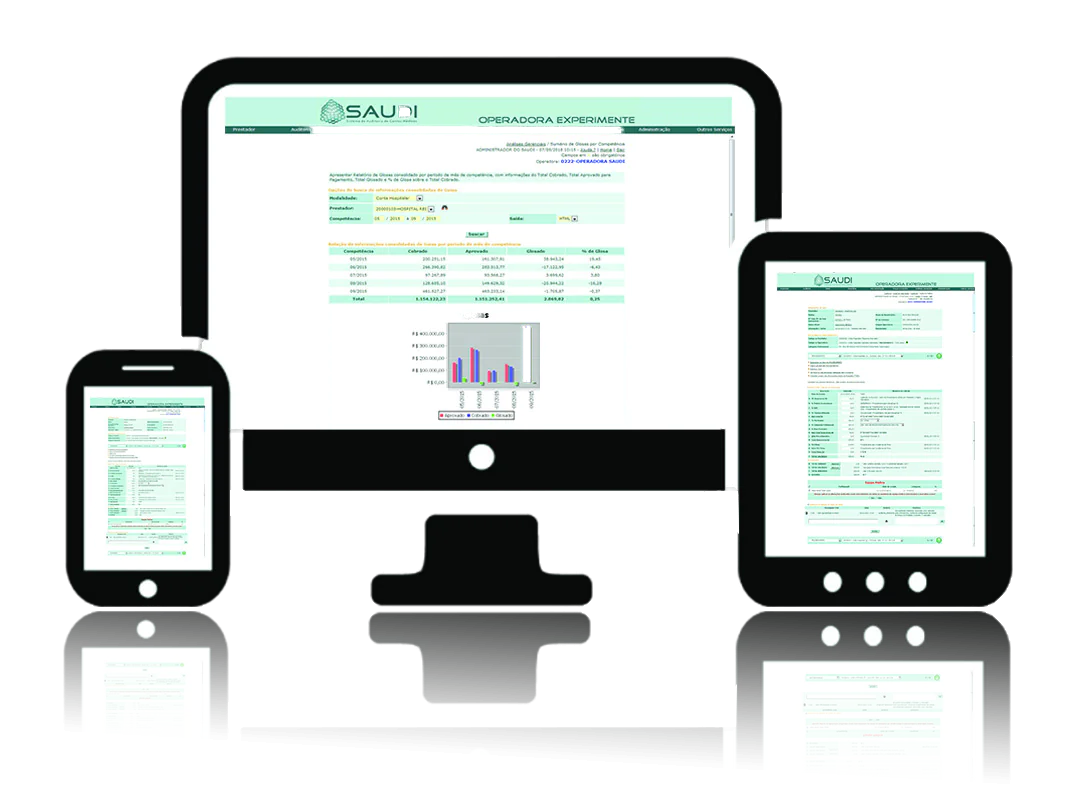The National Supplementary Health Agency (ANS) established the so-called Supplementary Health Information Exchange Standard (TISS Standard) through Normative Resolution No. 114 on October 26, 2005. This resolution created a standard of TISS Guide models for billing dental and medical care, in addition to establishing other procedures.
We prepared this article to explain what the TISS Standard is and what types of guides it includes. Read until the end to understand everything about this subject. Also take the opportunity to read other related posts on our blog.
TISS Guides Standard
The new TISS Guides standard was adopted gradually, and it managed to facilitate the management of medical bills in healthcare providers. Furthermore, it also facilitated audits of medical bills.
At first, the new TISS Guides standard was used on paper. However, from May 2007, service providers began sending these guides in digital format, in XML files, to health plan operators.
What is it for?
In practice, the establishment of the TISS Standard served, for example, to standardize charges for health services and proof of presence during the authorization process for procedures to be carried out in hospitals.
Its intention has been to standardize all administrative actions, subsidize economic, financial and assistance monitoring activities and evaluation of health plan operators, in addition to composing the Electronic Health Record.
The norm of the TISS standard is interoperability between health data systems recommended by the Ministry of Health and the ANS. Furthermore, it wants to reduce the asymmetry of information for health plan beneficiaries.
TISS Guide models
The TISS Guides are different formal models for describing and representing documents about any type of health care provided for the benefit of the health plan beneficiary. They are produced by the professional who provided the service and are sent to the health operator.
The main types of TISS Guides established by the ANS are:
- Guide other expenses;
- Reference guide;
- Dental treatment guide (GTO);
- Professional services request guide/diagnostic and therapeutic support service (SP/SADT);
- Individual honorary guide;
- Gloss Resource Guide
- Admission request guide;
- Hospitalization summary guide.
Next, we will explain each of the tabs mentioned above:
Is this text answering your questions about the TISS Standard created by ANS and the types of guides it has? Visit our website and discover a perfect solution to manage all these tabs in a simple process, in addition to finding out about our services!
-
Reference guides:
They are the most simplified model of medical guides standardized by the ANS. They are used in offices and clinics to bill for consultations made by health plan beneficiaries.
In the consultation guides, the data of the service provider, whether an individual or legal entity, the medical CRM and the service and patient information must be described. This includes the date of service, the code of the procedure performed and the total cost of the consultation. If the service is a return, it should not be charged if it is carried out within 30 days (only in the case of the same pathology. In general, it is up to each operator to pay for the return).
In this guide model, it is also possible to bill for outpatient consultations carried out in hospitals and those carried out by other types of health professionals, such as physiotherapists, psychologists, speech therapists, etc.
-
SP/SADT Guides:
Professional services/diagnostic and therapeutic support service request guides (SP/SADT) are most used in the supplementary health sector and are the most common. It is on their account that invoices are made for professional services and support services for diagnosis and therapy, such as renal replacement therapies (RRT), laboratory tests for clinical analysis, radiotherapy, imaging tests, chemotherapies, removals, home care, minor surgeries, consultations with procedures or therapies.
-
Individual fee guides:
These guides are normally used to bill for assistance services that were provided by a healthcare professional who participated in some type of procedure. Examples of these professionals who receive this guide include pediatricians in the delivery room, surgical assistants and anesthesiologists.
-
Admission summary guides:
They are used to bill for more complex types of procedures, which required hospitalization to be carried out.
Patients are usually discharged with less than 30 days of hospitalization in the vast majority of cases. Billing for the hospitalization summary form can be done completely with just one form. However, if the patient's condition worsens and there is a need for him to be hospitalized for a long period of time, there is the possibility of making partial charges, the most common every 30 days.
-
Dental Treatment Guides (GTO):
Dental Treatment Guides, also called GTOs, are used by dental professionals to bill for dental treatments.
-
Gloss Resource Guides:
Between operators and health service providers, disallowance processes must be standardized for electronic exchange, and must be implemented
-
Other expense tabs:
They are a complement to other TISS Guide models. However, other expense tabs cannot be invoiced alone. Their function is to authorize the charging of any additional expenses related to fees, materials, daily allowances, medicines, rentals or gases that are used in medical-hospital procedures.
Because of this, the other expenses tabs can be attached to the GTO, SP/SADT and hospitalization summary tabs.
If there is a need to charge expenses, but the services provided have already been invoiced, there is the possibility of sending them attached to an empty guide, where there is no description of procedures.
-
Associated Guides:
In many cases, a procedure requires other services. Therefore, additional guides are produced. They are always related to an initial health event, requiring a main guide.
Therefore, it is necessary to associate the guides associated with the initial guide using the “Main Guide Number” field. Filling in this information correctly will ensure the correct relationship between health events, creating a medical bill in accordance with reality.
If you are a doctor or nurse, auditor or medical account analyst and/or manager of health plan operators, get to know SAUDI right now, a system that makes it possible to increase the capacity for technical analysis of requests, through access to supporting information in real time, optimizing the speed of analysis, registration and processing of authorizations.
O SAUDI system reduces the risk of delays in responding to requests, avoiding complaints from beneficiaries, through better workflow control, through the possibility of determining a response deadline for granting authorization or denial based on the TISS standard.
With SAUDI all management of medical bills and healthcare costs becomes much easier, in addition to allowing your health care provider to always comply with the Legal and Governmental requirements of the health plan sector and that the performance of the your work be recognized for the efficiency, agility and transparency of processes.
If you liked this content, subscribe to our newsletter and follow our social networks to have access to more useful information. We are present in Facebook, Linkedin It is Instagram.









